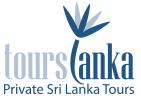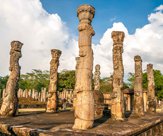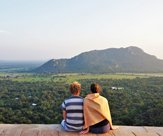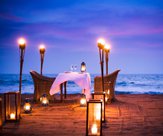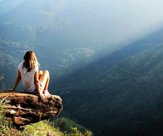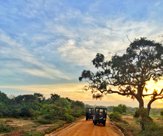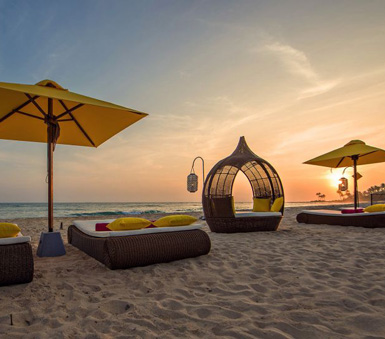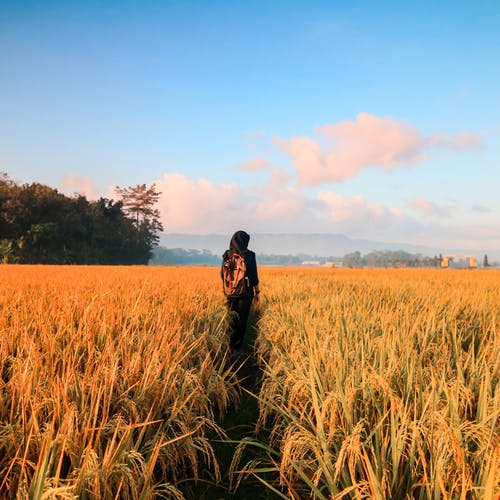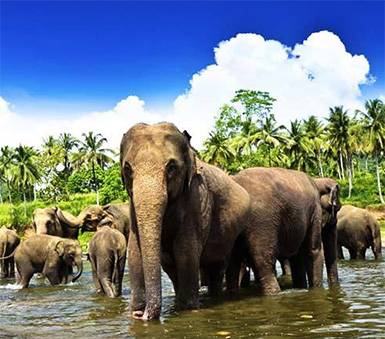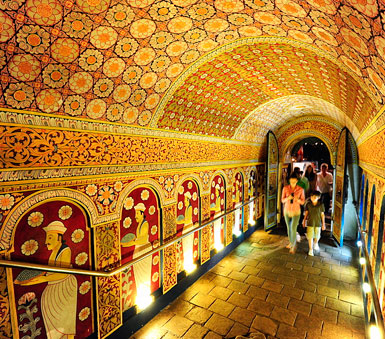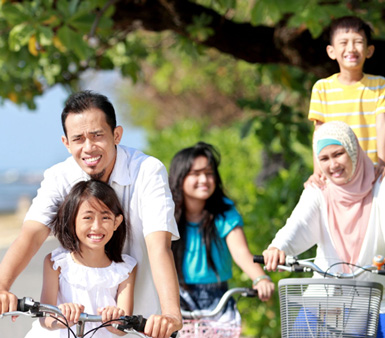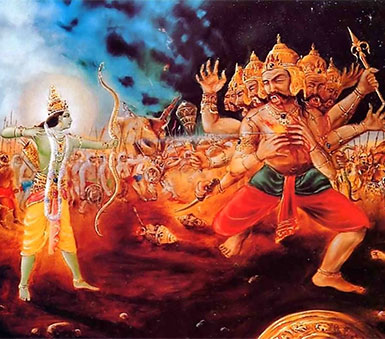Negombo Sri Lanka (Sinhala: මීගමුව ; Tamil: நீர்கொழும்பு) is a bustling city close to the Bandaranaike International Airport; and second largest city in the Western province, after Colombo. Located at the lagoon-mouth, Negombo is a major tourist destination with an old, large and thriving fishing industry.
The beach here is quiet and peaceful, and the sight of the fisher folk out at sea on their oruwas (outrigger canoes) is a particularly charming sight. It is not always safe to swim here, but diving enthusiasts can explore the wreck of a World War II British cargo plane in nearby Marawila.
A boat trip winding through the lush mangroves down the Dutch Canal or Muthurajawela Marsh will reward you with sightings of monitor lizards and flocks of migrant birds.
The Munneswaram Hindu temple is 20kms away, and can be combined with a tour of the famous fish market and the seaside town of Chilaw. The larger hotels in the area also have equipment and facilities for water sports such as windsurfing, sailing and skiing.
History of Negombo
The Sinhala name for Negombo, Mīgamuva (මීගමුව), means ‘mass of bees’. It is believed that a swarm of bees settled on a boat, and the place was named where the boat was pulled ashore.
Around the seventh & eighth centuries, the Muslim Arabs (Moors) who dominated the East-West trade routes, settled in Negombo and started trading in cinnamon. The best cinnamon in the world originated from Sri Lanka and the most prized variety came from the coastal stretch along Negombo. In the early 1500s the Portuguese grabbed the coastal areas as well as the Cinnamon trade from the Moors and built a fort for protection. The Dutch managed to oust the Portuguese in 1644 and improved the fort and fortified the town further. The British gained the town without resistance in 1796.
Many local Karavas converted to Catholicism during the Portuguese rule. As a result, the majority in Negombo and surrounding coastal areas are now Catholics. Negombo has an old world atmosphere with many Portuguese-era Catholic churches and forts. It is affectionately called ‘little Rome’ due to the numerous Catholic churches and Roman Catholic residents. A fine example is St.Mary’s church in the town centre.
Negombo – Points of Interest
Negombo Fish Market (Fishing Village)
The Negombo Fish Market (Fishing Village) also known as the Lellama by the locals is located across the lagoon bridge, near the Old Dutch Gate. The large open air fish market is the second largest in the country.
The Negombo fish market is a microcosm of the local fishery industry. It gives you an unpretentious insight into the local fisher community. The market is loud, vibrant and smells like fish!
You will be able to witness the fishermen in hundreds of boats bringing in their days catch. See how the wholesalers and restaurateurs trade and watch the packing & loading of fish for distribution across the country as well as for export – worldwide. The retail area is a bustling hive of activity – with customers negotiating prices with mom and pop fish vendors.
The best time to visit the Lellama is at dawn, around 6:00 am to really understand the volume and scope of the operation. You will see a multitude of boats full of fresh fish coming in and lowering their sails. The smaller fishing boats usually come first, followed by the larger vessels. You can see their nets being pulled ashore and the catch shaken out of nets to be cleaned, scaled, gutted, salted and dried in the sun. You’ll see the loading of fish on small-time fish vendors’ bikes, who in turn sell their fish to consumers.
The abundance of seafood in every imaginable shape, form, color and size is simply mind-boggling. You’ll see deep-sea; open water and reef fish from the ocean – along with tiger shrimp, prawn, lobster & crab from the lagoon. The profusion of fish includes herring, giant tuna, sea bass, barracuda, skipjack, mackerel, salmon, marlin, mullet, swordfish, sailfish, eels, shark as well as squid (calamari) & cuttlefish – the variety will astound you.
This is a local market, by the locals for the locals – you as a visitor will not be bothered. However, you need to be mindful that this is a place of work – people are busy.
The fisher folk are loud, colorful and friendly. They will oblige by explaining the fishing process as well as pose for a photo, or take one of you holding a fish. The fish sold here is really cheap. Indulge yourself and buy some seafood – you might be even able to give it to your hotel chef to cook.
Do note that visiting the Negombo Fish Market is not for those with a weak stomach. The smell of fish and sight of blood can be overwhelming. Be prepared, wear strong waterproof shoes. If you can put up with these minor inconveniences – then do not miss the opportunity to visit the Lellama if ever you are in Negombo. Contact us at Tourslanaka to organize a private tour of the Negombo Fish Market.
Boat Ride – Dutch Canal & Muthurajawela Marsh
The Dutch canal flows through the city of Negombo onto the Muthurajawela Marsh. Known as the ‘Swamp of Royal Treasure’, Muthurajawela borders the Negombo Lagoon to the south and Kelani river to the north. The one and a half hour boat ride takes you along the Dutch Canal, through the marsh onto the lagoon. Along the way you will be able to fill your camera with images of water monitors, crocodiles, Brahminy kites, monkeys and a host of other fish, reptiles, birds and small mammals.
Muthurajawela Marsh is said to be the island’s largest saline peat bog. The marsh bears a staggering variety of flora and fauna. About 192 flora and 209 fauna, excluding 102 species of birds have been discovered. Some indigenous floras and faunas have also been found in Muthurajawela marsh. Visitors may see water birds such as herons, egrets in abundance in the lagoon and the marsh. It is also a residence for 40 different species of fish, of which 15 falls under the category of indigenous fauna. The slender Loris a nocturnal animal listed as endangered, can be seen on a rare occasion.
The Muthurajawela marsh was declared sanctuary by the government in 1996 due to its vast bio diversity. Visitors are assisted by the Muthurajawela marsh centre. The centre educates people about the importance of Muthurajawela. The staff at Muthurajawela marsh centre is available everyday except Monday; from 7.00 a.m to 6.00 p.m. A boat ride service is provided for visitors to travel through the marsh and lagoon. The center offers well-trained guides. You will not only be able to travel on water, but even walk on the land and view the natural greenery. Early mornings or evenings are the best times to view, Muthurajawela. Late mornings and afternoons should be avoided due to the harsh tropical sun.
Festivals and Events in Negombo
Duwa Passion Play
The fishing village of ‘Duwa’ – is an island connected to Negombo by a causeway. Duwa is famed for the country’s oldest and best known Passion Play. This is a dramatic enactment of the passion of Jesus Christ. The Duwa passion play is one of the most famous Catholic pageant in Sri Lanka with a history of over 400 years. The pageant involves the entire village and is staged throughout the Christian Holy Week of Easter. Many villages around Negombo now conduct elaborate passion plays with over 250 actors, some even include a number of popular local cinema and TV stars.
The ruins of the old Dutch fort, and a Dutch cemetery and green are near the mouth of the lagoon.
Fisherman’s festival
A Fisherman’s festival is held in Negombo around late July. The catch includes a wide variety of deep ocean fish including shark, as well other reef fish. You will also find other seafood like lobster, crab and prawns from the lagoon.
